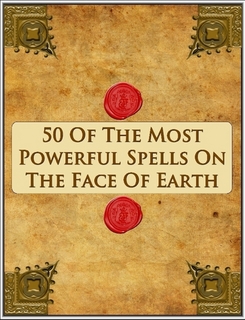Solomonic Grimoires - Ars Notoria The Notary Art Of Solomon (985.0 Kb)
 Book downloads: 5000
Book downloads: 5000
Tiitle of a work of magical invocations and prayers attributed to Solomon and therefore related to the celebrated Key of Solomon the King, one of the most famous grimoires, or book of ceremonial magic.Ars Notoria is known in the English translation of Robert Turner (Sloane Manuscript 3648, British Library, London), published by him in 1657.Book can be downloaded.
Note that, unfortunately, not all my books can be downloaded due to the restrictions of copyright. However, most of the books on this site do not have copyright restrictions. If you find any copyright violation, please contact me at  . I am very attentive to the issue of copyright and try to avoid any violations, but on the other hand to help all fans of magic to get access to information.
. I am very attentive to the issue of copyright and try to avoid any violations, but on the other hand to help all fans of magic to get access to information.
If you are having difficulty downloading books, or you are looking for a book that is not on the site (but maybe it is in my home library), please write me a email to

and I will try to help, I can send the book by e-mail
darkbooks.org began in early 2008 I am happy to donate my time to providing you this resource, I would also like to note, that, although I try, I do not always have enough time to deal with the site, including, unfortunately, I do not always have time to answer all letters, because I have to earn money for a living. If you can financially help me, it would free me from the worries of earning money for living, perhaps partially, but ideally completely, then all 100% of my time could be devoted to the site. Also I do pay monthly web server/files storage and hosting costs to keep this site on the air. Please consider making a donation to help me continue this activity and devote more time to it or at least offset the cost of paying for storage/hosting. Even a small contribution helps!
Tiitle of a work of magical invocations and prayers attributed to Solomon and therefore related to the celebrated Key of Solomon the King, one of the most famous grimoires, or book of ceremonial magic.Ars Notoria is known in the English translation of Robert Turner (Sloane Manuscript 3648, British Library, London), published by him in 1657.
About Author:
The medieval Solomonic grimoires are, in fact, a sub-set of a larger literary genre - the folkloric "receipt-book." (The word "receipt", used in this sense, is an archaic form of the word "recipe.") A receipt-book was a hand-written journal of family and local folklore, passed down from generation to generation.
Solomonic grimoires attributed to King Solomon (as several others were). The known copies originated in the Middle Ages and later. The books contains several paragraphs and terms inspired by Talmudic texts and the Jewish Kabbalah teaching.
It is possible that the Key of Solomon inspired later works such as the Lemegeton, also called The Lesser Key of Solomon, although there are many differences between both books. What may have inspired the Lemegeton are the conjurations and rituals of purification, and in a less important way, the clothing and magic symbols.
Several versions of the Key of Solomon exist, in various translations, and with minor or significant differences. Most manuscripts date to the 16th or 17th century, but a prototype in Greek still survives from the 15th century.
The Solomonic mystics were unique because they were among the first humans in history to have access to the technology of paper and bound books.[3] (They were very often scholars, scientists or scribes.) Therefore, they naturally recorded much of their tradition into manuscripts called textbooks or "grammars" (French: grimoire). The appearance of these grimoires shocked Roman Catholic and many Protestant authorities so deeply, it triggered the Inquisitions and mass book burnings. What we know of Solomonic mysticism today comes largely from the grimoiric manuscripts that survived.
Today, there are many ceremonial groups that make limited use of the Solomonic material - most of them descended from or influenced by a late Victorian quasi-Masonic lodge called the Hermetic Order of the Golden Dawn. There have even been a number of modern Orders that focus entirely on the grimoires, though even they are influenced by post-Golden Dawn magickal methodology. Toward the end of the 20th Century, several books were released that present methods for summoning Angels and spirits based upon (or influenced by) Golden Dawn techniques.



 Book downloads: 5000
Book downloads: 5000
 . I am very attentive to the issue of copyright and try to avoid any violations, but on the other hand to help all fans of magic to get access to information.
. I am very attentive to the issue of copyright and try to avoid any violations, but on the other hand to help all fans of magic to get access to information.
 and I will try to help, I can send the book by e-mail
and I will try to help, I can send the book by e-mail